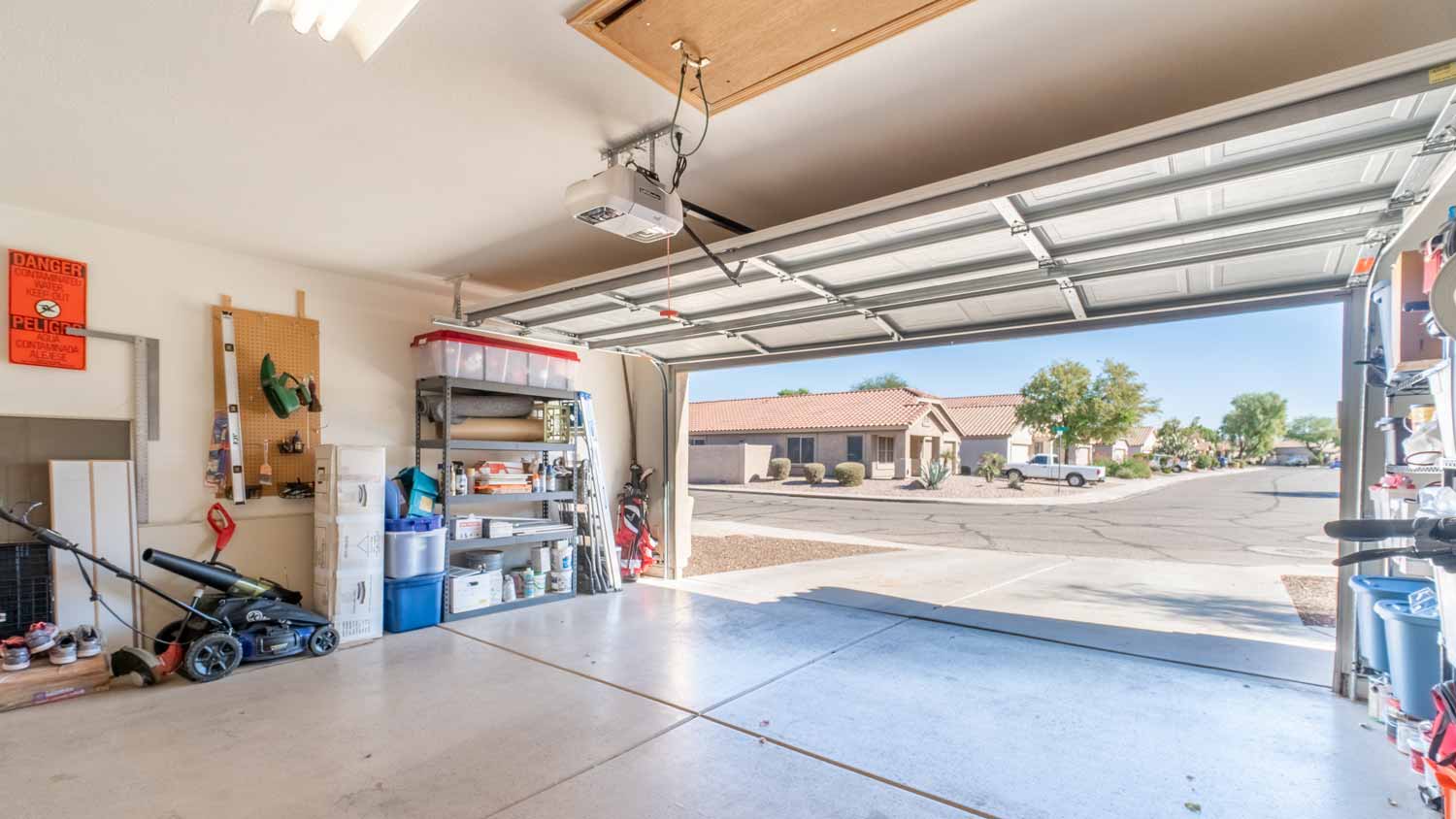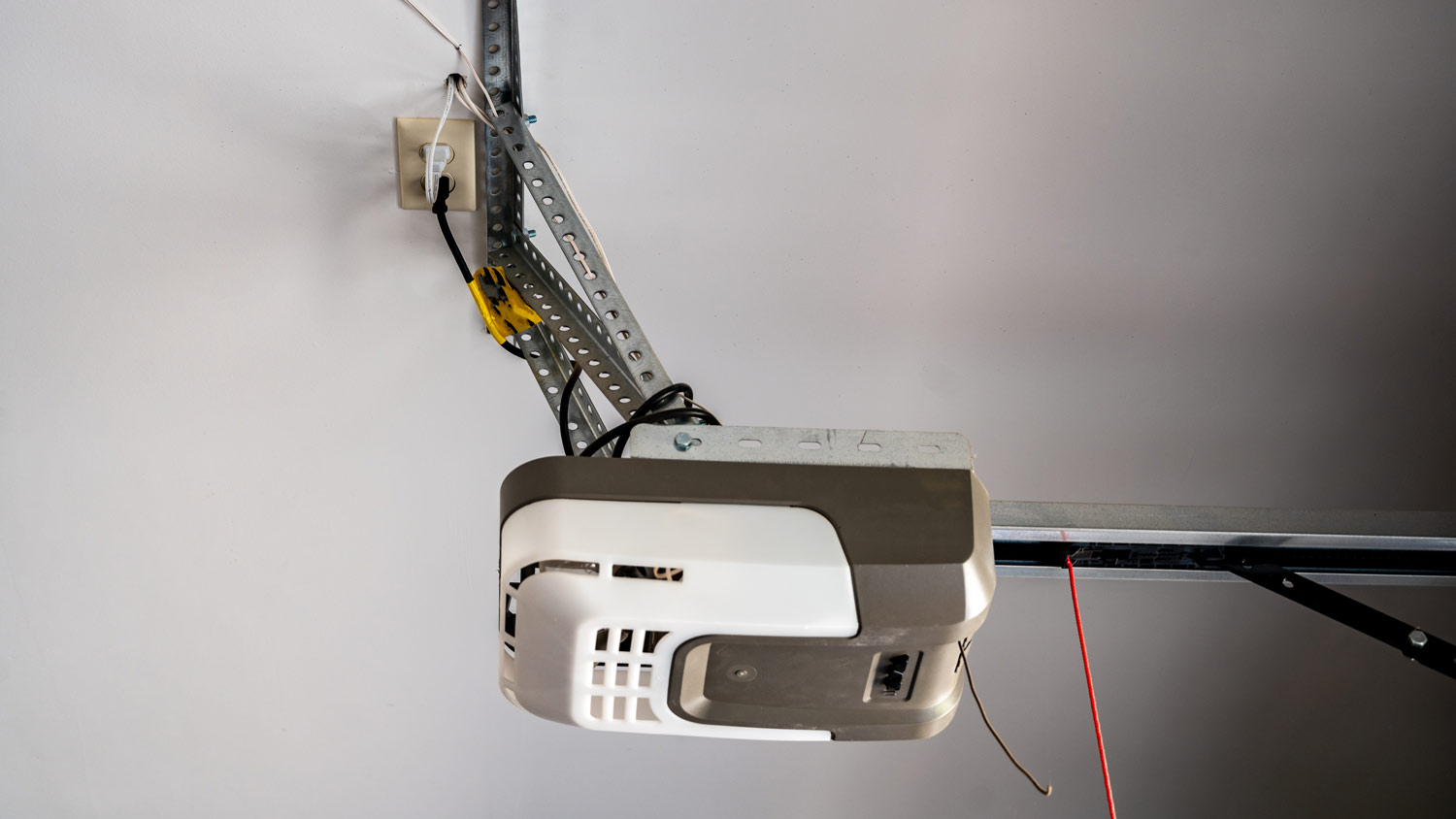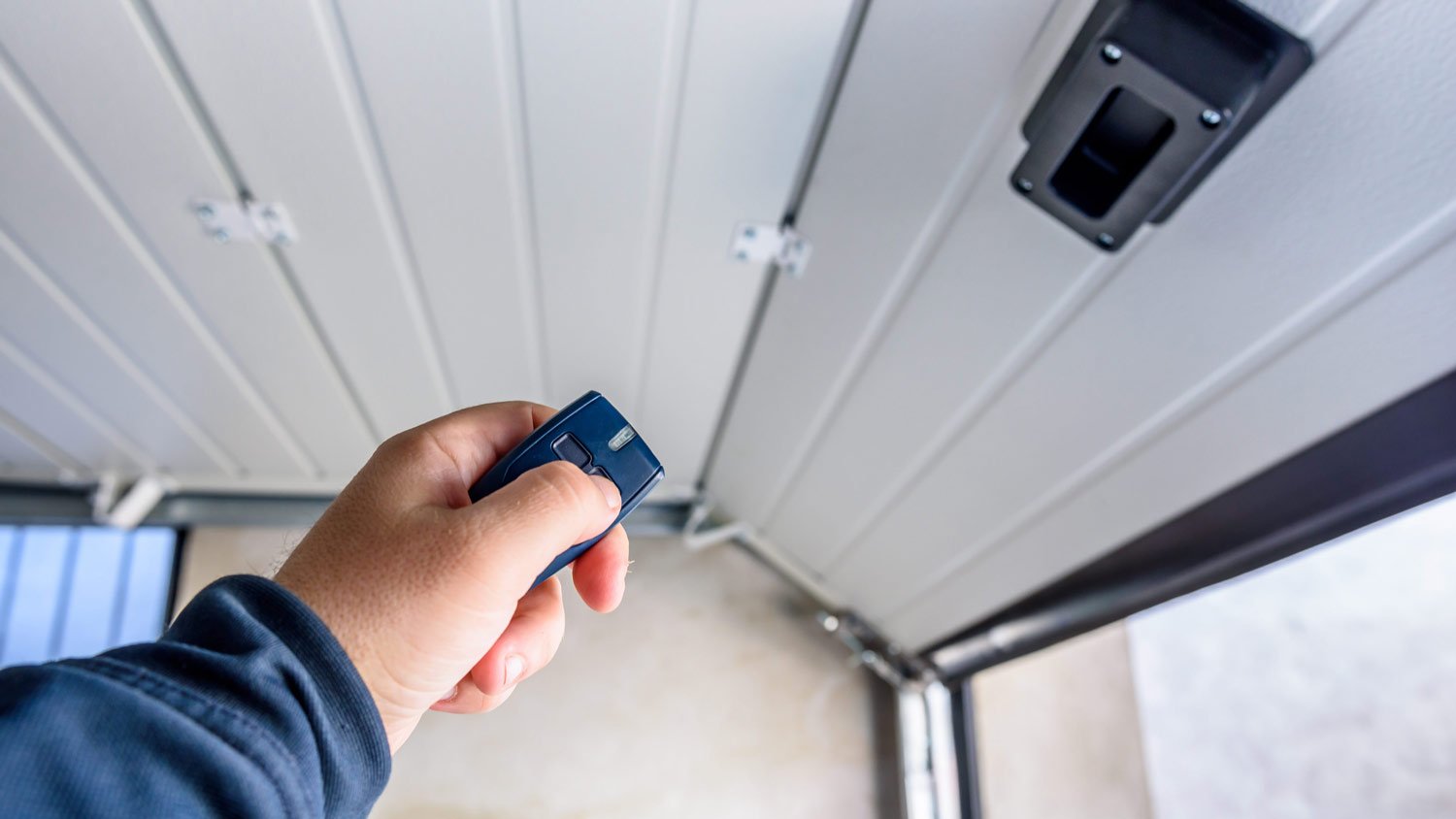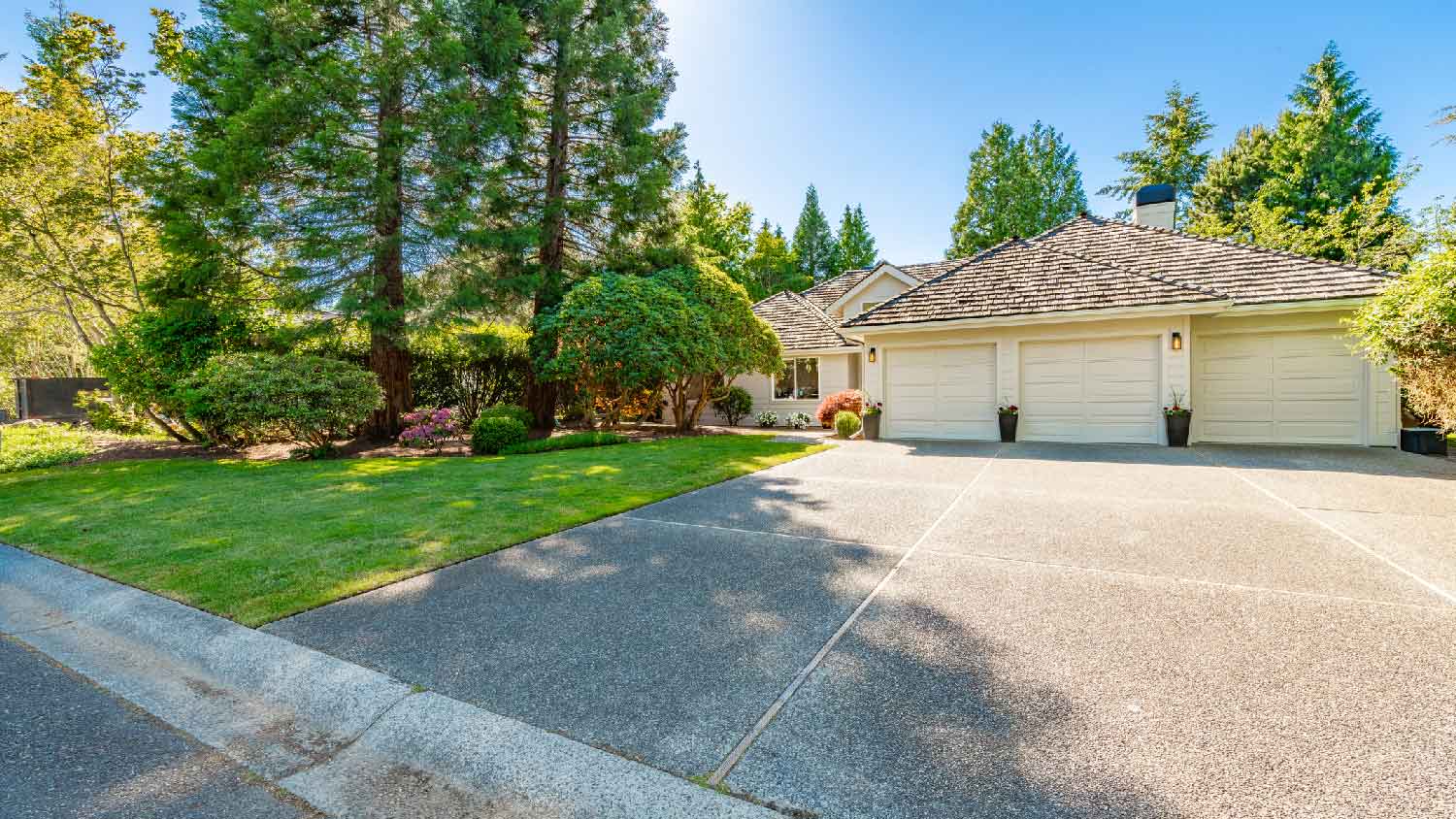
Replacing a garage door is necessary to add security and value to your home. Learn how each door type affects the total cost of this project in Columbus, OH.
It may seem like magic, but it's not


Garage door openers include belt drive, chain drive, and direct drive models.
You can control them using a wall panel or remote control.
Garage door openers rely on radio transmission to operate.
Modern models have safety features to keep the door from closing on people or objects.
If your home has a garage, you may wonder: how does a garage door opener work? This question will likely pop up if your garage door opener ever stops working. Sure, you could get out of your car and manually open your garage door, but that’s not always ideal. Understanding how your garage door opener works can help you troubleshoot any potential problems so you can either fix it yourself or call a garage door pro to help. Let's take a closer look at the parts that let you easily access your garage.

A garage door opener is a motorized device that automatically opens and closes your garage door so you don’t have to do it manually. You most often control a garage door opener with a switch installed on a wall or a hand-held remote. Modern models have safety features that keep the door from closing when a person or object is underneath or that reverse the direction of the door when necessary.
While all garage door openers control the motion of the door, they don't all do so in the same way. Several types exist:
Belt drive: A belt drive opener uses a rubber belt to move the door. This type of door opener is quiet and low-maintenance, since there are fewer parts to wear out.
Chain drive: A chain drive door opener uses a metal chain to pull the door open and closed. It's louder than a belt drive model but also less expensive.
Direct drive: Sometimes called a side-mount motor, a direct drive opener eliminates the need for a belt or chain entirely. Instead, the motor itself moves the door open and closed.
Screw drive: A screw drive door opener replaces the rubber belt or metal chain with a threaded rod, which spins as the door moves.

While the exact parts will vary based on the type of garage door opener, you'll often find the following:
Control pad: Usually mounted to the wall, the control pad allows you to open and close the door.
Remote: Most garage door openers include a remote, which you can keep in your car, to open or close the door from a distance.
Drive unit: The drive unit is what houses the opener's motor. It's the plastic box that mounts to the ceiling at the top of the garage door.
Bracket and pickup arm: The bracket and pickup arm connect the door to the garage door opener.
Photo eyes: For safety reasons, garage door openers include a pair of safety sensors, called photo eyes, which detect when an object or person is located in the path of the closing garage door.
Emergency release: An emergency release cord closes the door when there is a problem with the motor, such as a dead battery or power outage.
Your garage door opener relies on radio transmission to work. Without getting too technical, every time you push the open/close button on the control pad or remote, it sends a signal to the door opener, telling it to move the door.
The opener is the receiver and the control pad or remote is the transmitter. They use a specific frequency to communicate, so you don't have to worry about interference from something else. For example, you don't have to worry that your garage door will open if someone turns the TV on in your living room.
Modern garage door openers must have safety systems installed to prevent injury. Photo eyes or safety sensors are just one example of a safety feature. During installation, the photo eyes are placed opposite each other on each side of the door frame. A light beam stretches between them.
Anytime the light beam breaks, such as when you walk through your open garage door or a ball comes to rest in the door frame, the photo eyes keep the opener from operating. In some cases, they may reverse the direction of a closing garage door.
Other common safety features include:
A locking system to keep the door from being opened or closed while you're away from home.
Warning sounds, such as beeping, that play when the door is closing.
Smartphone apps that alert you anytime your door opens or closes.
From average costs to expert advice, get all the answers you need to get your job done.

Replacing a garage door is necessary to add security and value to your home. Learn how each door type affects the total cost of this project in Columbus, OH.

Garage door tune-ups aren’t too expensive, and most of the fixes are simple. That being said, simple doesn’t always mean safe, so it’s best to hire a pro for this project.

Replacing a garage door is necessary to add security and value to your home. Learn how each door type affects the total cost of this project.

Learn how to open your garage door manually during an outage safely without damaging the garage door. Never get stuck again.

If you keep hearing unusual sounds when you open and close your garage, you might wonder: Why is my garage door beeping? Here are three possible reasons.

Solve why your garage door isn't opening with your remote control using these common causes and fixes.